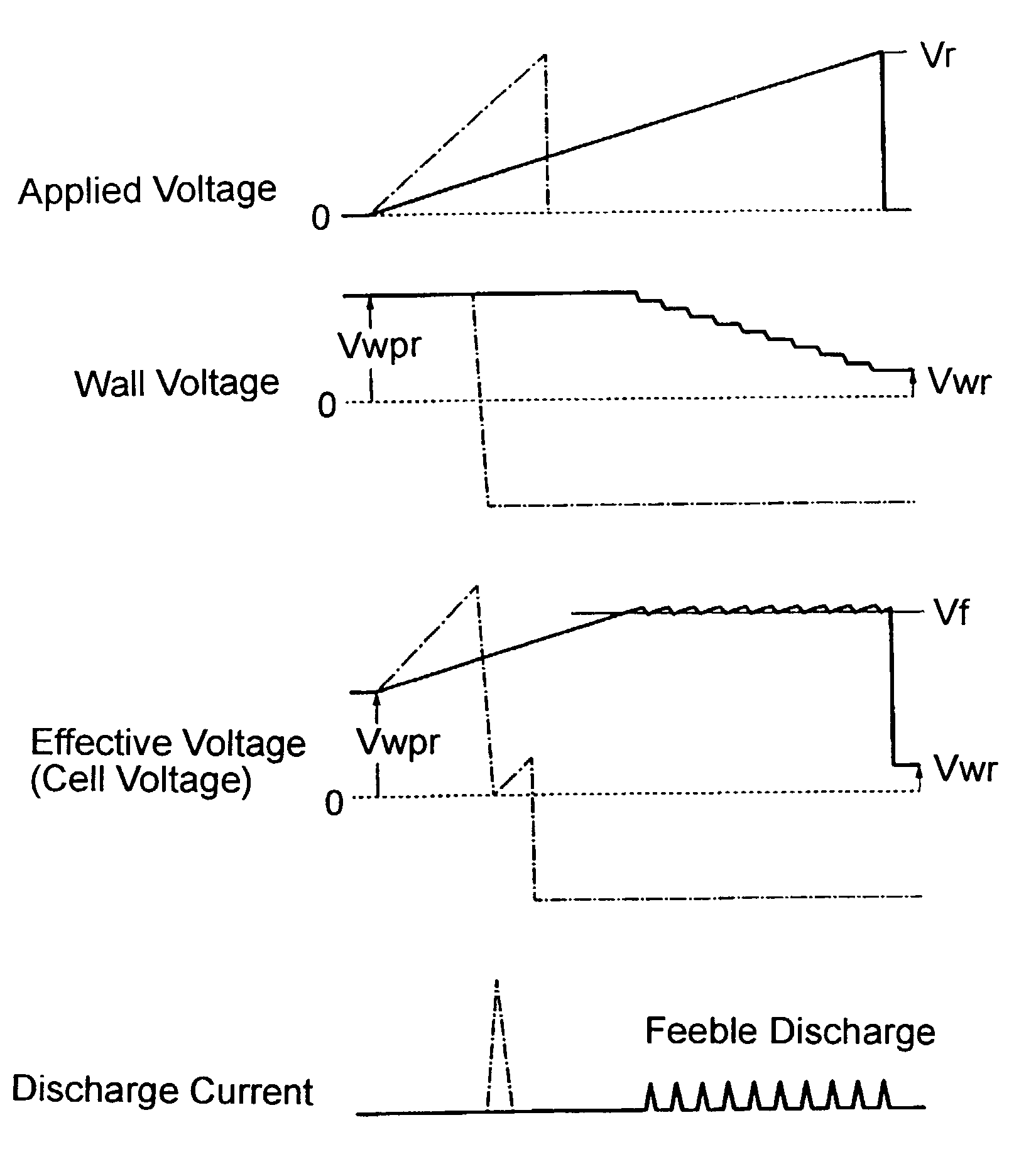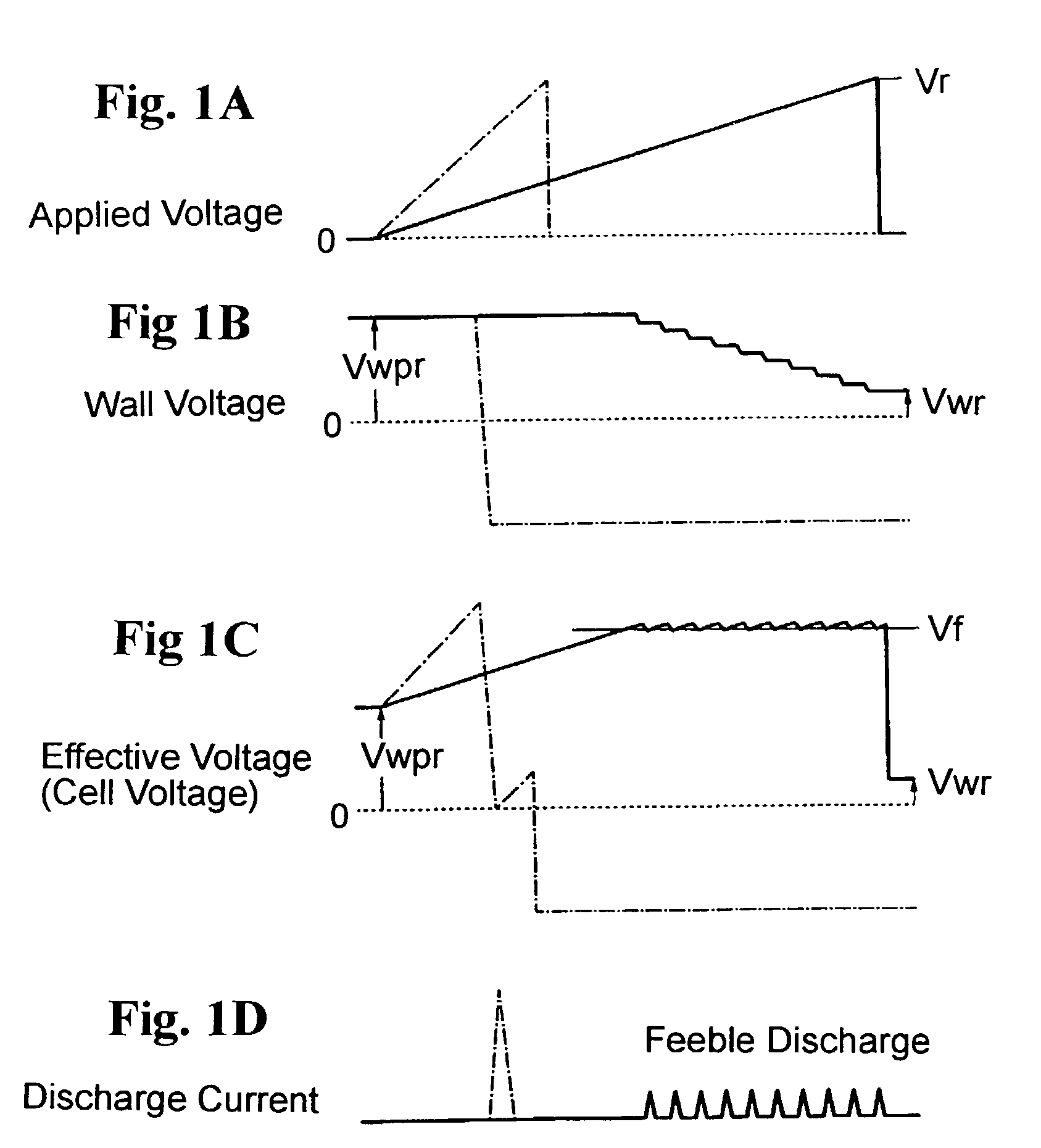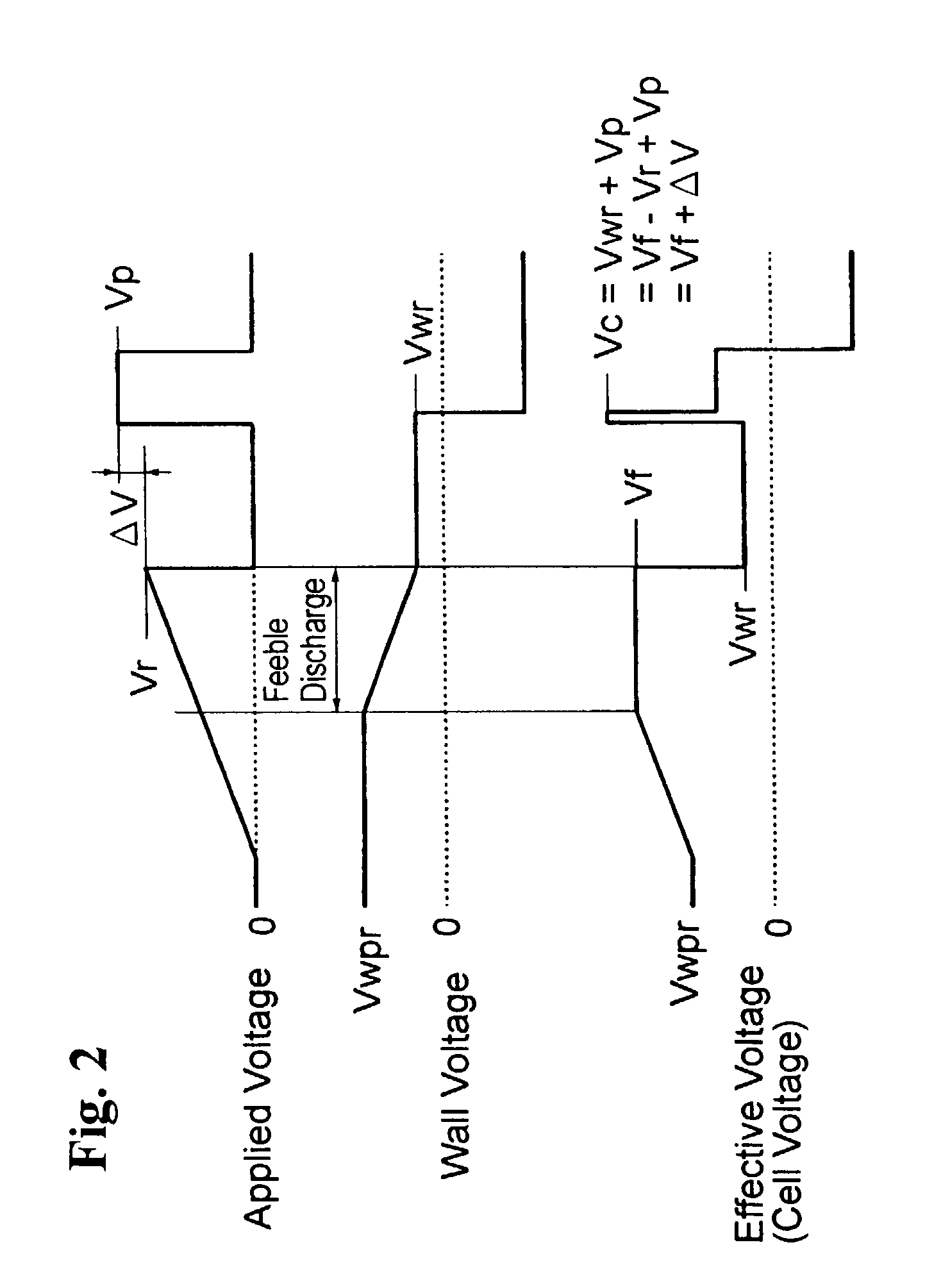Method for driving a gas electric discharge device
a gas electric discharge and discharge device technology, applied in the direction of instruments, static indicating devices, etc., can solve the problems of difficult control of the discharge for addressing, the voltage applied in the addressing must be set, and the strong discharge produces an excessive amount of wall charge in all cells, so as to improve the reliability of driving, reduce the luminance of the background, and improve the effect of contras
- Summary
- Abstract
- Description
- Claims
- Application Information
AI Technical Summary
Benefits of technology
Problems solved by technology
Method used
Image
Examples
first embodiment
[0074]FIG. 7 shows voltage waveforms illustrating a drive sequence in accordance with the invention. In this figure, the signs X and Y representing the main electrodes are accompanied by numerals (1, 2, . . . , n) indicating the order of lines corresponding to the main electrodes, and the signs A representing the address electrodes are accompanied by numerals (1 to m) indicating the order of columns corresponding to the address electrodes. Like numerals are seen in other figures described later.
[0075]The outline of a drive sequence repeated in every sub-field is as follows:
[0076]In the address preparation period TR, a pulse Pra1 and a pulse Pra2 of different polarities are sequentially applied to all the address electrodes A1 to Am, a pulse Prx1 and a pulse Prx2 of different polarities are sequentially applied to all the first main electrodes X1 to Xn, and a pulse Pry1 and a pulse Pry2 of different polarities are sequentially applied to all the second main electrodes Y1 to Yn. Here ...
second embodiment
[0093]FIG. 9 shows voltage waveforms illustrating a drive sequence in accordance with the invention. From comparison of this embodiment with the embodiment of FIG. 7, it is understood that there is no restriction on the number of the sustain pulses Ps. In the above-discussed embodiment of FIG. 7, the last sustain pulse Ps is applied to the main electrodes X1 to Xn. In this embodiment, on the other hand, the last sustain pulse Ps is applied to the main electrodes Y1 to Yn. This means that the polarities of the wall voltages at the end of the sustain period TS are reverse to those in the embodiment of FIG. 7. However, pulses Prx1, Pry1, Pra1, Prx2, Pry2 and Pra2 of the same conditions as those in the embodiment of FIG. 7 are applied in the address preparation period TR.
[0094]FIG. 10 shows waveforms of the applied voltages and wall voltages in the drive sequence shown in FIG. 9.
[0095]The change of wall voltages in a cell not illuminated in the last sub-field is the same as in FIG. 7. I...
fourth embodiment
[0103]FIG. 12 shows voltage waveforms illustrating a drive sequence in accordance with the invention.
[0104]In the address preparation period TR, a pulse Pry1′ in a rectangular waveform is applied to all the main electrodes Y1 to Yn to produce a predetermined wall voltage in all the cells, prior to the charge adjustment by the application of the pulses Prx2, Pry2 and Pra2. The wave height of the pulse Pry1′ is set to exceed the firing voltages VfXY and VfAY.
[0105]FIG. 13 shows waveforms of the applied voltages and wall voltages in the drive sequence shown in FIG. 12.
[0106]In a cell not illuminated in the last sub-field, one discharge is generated by the application of the pulse Pry1′. This discharge produces the wall voltages VwprXY and VwprAY. The change of the wall voltages after the application of the pulses Prx2, Pry2 and Pra2 is the same as in the first embodiment. However, in the case of the erase addressing, the wave height of the pulse Pry1′ must be set such that the wall vol...
PUM
 Login to View More
Login to View More Abstract
Description
Claims
Application Information
 Login to View More
Login to View More - R&D
- Intellectual Property
- Life Sciences
- Materials
- Tech Scout
- Unparalleled Data Quality
- Higher Quality Content
- 60% Fewer Hallucinations
Browse by: Latest US Patents, China's latest patents, Technical Efficacy Thesaurus, Application Domain, Technology Topic, Popular Technical Reports.
© 2025 PatSnap. All rights reserved.Legal|Privacy policy|Modern Slavery Act Transparency Statement|Sitemap|About US| Contact US: help@patsnap.com



